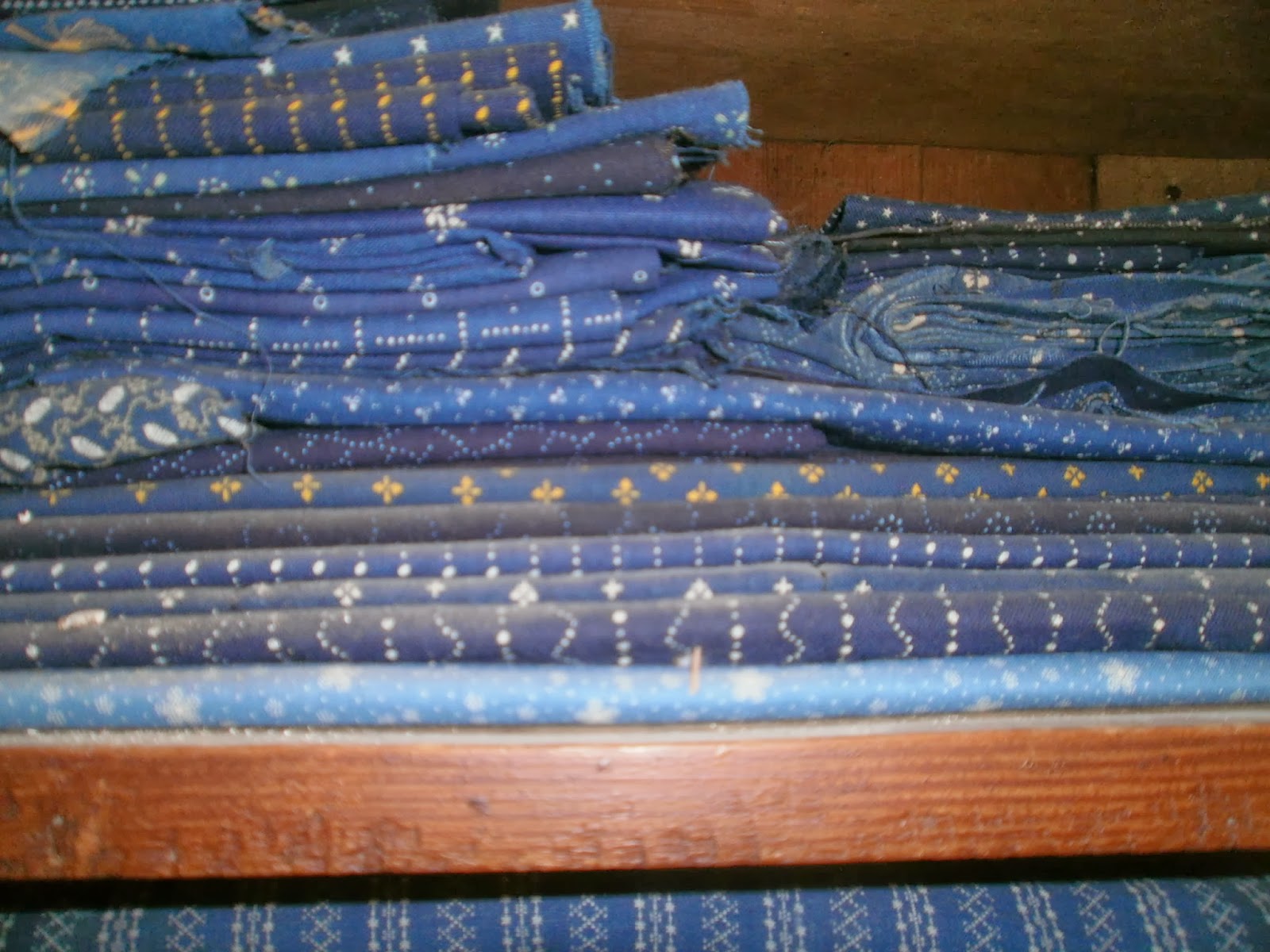Monday, March 28, 2022
Indigo Blue Calico
Indigo blue calico, my favorite fabric, was printed in Amana from 1861-1917, 4500 yards a day in its prime. Amana Calico was produced from the 1860’s until WWI when imports from Germany, which included the dyes needed for producing the cotton goods, were shut down. The last shipment of dye in 1916 kept the mills running for about a year, but once the supply was gone, the mills permanently closed. At the height of calico production in 1891, approximately 4000 -4500 yards of calico were printed each day. The mill or "print works" was located on the site of the present Amana Furniture Shop, the smallest brick building to the west being part of the original factory that employed 30 workers. The waterpower from nearby Price Creek was used to power the printworks mill. Designs were random geometric, floral, borders, and repeated stripes with about 500 patterns documented. The fabrics were used for summer work clothes, upholstery, curtains, quilts, etc. Many families dressed alike in this fabric. Calico patterns were printed with hand carved blocks, paste and acid resist rollers, and discharge print blocks. Dyes were special indigo plant dyes, when exposed to the air would oxidize and turn yellow-green to indigo. These dyes were not fast in the early days so would often leave residue on the pine benches and hands, only to be bleached clean later. The Print Works mill closed in 1917 due to the lack of imported dyes and supplies at the onset of WWI. The last shipment of indigo dye, processed and imported from Germany, was brought on a submarine that slipped through a net of British destroyers to complete a harrowing voyage from Bremenhaven to Baltimore. This submarine, it is said, may have carried a special envoy from Germany to Washinton D.C. to appeal to the USA not to enter WW1. But they did, so all dye and goods shipments ceased. The story of the sub and crew spread to the USA and quickly as it carried goods for Amana, Iowa, a German settlement. So naturally this kept people away from Amana as anti German feeing was at a high. Despite all this the printworks still provided a means to sustain the early Amana community. The printed fabric sold for a reasonable price and allowed working women to afford new and beautiful calico cloth for clothing, a treasure in life for most 19th century women. Today the German influenced, indigo calico dyed fabric, which is very rare and rich as ever, is much appreciated by viewers and collectors.
Subscribe to:
Post Comments (Atom)






No comments:
Post a Comment